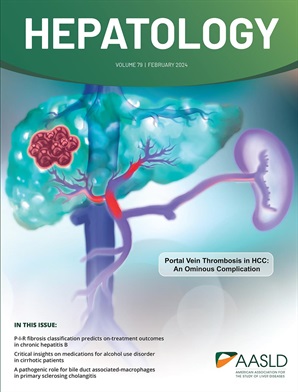多组学结合机器学习定义了胆管癌的独特分子亚型,并确定了TNK1作为治疗靶点。
IF 15.8
1区 医学
Q1 GASTROENTEROLOGY & HEPATOLOGY
引用次数: 0
摘要
血管癌(CCA)是最致命的癌症之一,具有分子异质性和治疗耐药的特点。为了发现新的生物信号和治疗机会,我们采用了结合机器学习的多组学表征。方法和结果我们使用全外显子组测序、mRNA测序和蛋白质组/磷蛋白质组分析分析了所有解剖型CCA亚型。综合维度降低揭示了RNA,蛋白质和磷酸化蛋白的特征驱动肿瘤异质性,使聚类。机器学习算法识别每个簇的分子特征,并将外部数据集和患者衍生异种移植(PDX)模型映射到这些簇上。激酶富集分析突出了每个簇中活性的靶向激酶。使用选择性TNK1抑制剂TP-5801在簇特异性PDX模型中进行体内验证。我们确定了三个具有不同途径表征的分子簇:免疫调节(簇1),代谢(簇2)和基因调控/细胞命运(簇3)。聚类分配与解剖亚型无关,但与治疗目的切除后的总生存率相关。我们还确定了与总体生存和淋巴结转移相关的多组学特征和途径,这对患者的治疗选择至关重要。激酶富集分析指出TNK1是代谢簇中高度活跃的激酶。在代谢性PDX模型中,TP-5801治疗显著降低了肿瘤生长,但在代表其他簇的模型中没有。结合内部数据和公开可用的数据集,我们确定免疫调节簇对吉西他滨/顺铂治疗最敏感,使用簇特异性PDX模型在体内证实。结论:通过定义与治疗反应和总体临床结果相关的独特分子亚型,综合多组学表征提供了翻译见解。该方法将TNK1鉴定为CCA肿瘤特定子集中以前未被识别的治疗靶点。本文章由计算机程序翻译,如有差异,请以英文原文为准。
Multiomics combined with machine learning defines unique molecular subtypes of cholangiocarcinoma and identifies TNK1 as a therapeutic target.
BACKGROUND AND AIMS
Cholangiocarcinoma (CCA) is one of the most lethal cancers, characterized by molecular heterogeneity and treatment resistance. To uncover new biological signals and therapeutic opportunities, we employed multiomic characterization combined with machine learning.
APPROACH AND RESULTS
We profiled all anatomical CCA subtypes using whole exome sequencing, mRNA sequencing, and proteome/phosphoproteome analysis. Integrative dimensional reduction revealed RNA, protein, and phosphoprotein features driving tumor heterogeneity, enabling clustering. Machine learning algorithms identified molecular features for each cluster and mapped external datasets and patient-derived xenograft (PDX) models onto these clusters. Kinase enrichment analysis highlighted targetable kinases active in each cluster. In vivo validation was performed in cluster-specific PDX models using the selective TNK1 inhibitor, TP-5801. We identified three molecular clusters with distinct pathway characterization: immunomodulatory (cluster 1), metabolic (cluster 2), and gene regulation/cellular fate (cluster 3). Cluster assignment was independent of anatomic subtype but correlated with overall survival following curative-intent resection. We also identified multiomic features and pathways linked to overall survival and lymph node metastases, crucial for patient treatment selection. Kinase enrichment analysis pinpointed TNK1 as a highly active kinase in the metabolic cluster. Treatment with TP-5801 significantly reduced tumor growth in a metabolic PDX model, but not in models representing the other clusters. Combining internal data with publicly available datasets, we identified the immunomodulatory cluster as most responsive to gemcitabine/cisplatin therapy, confirmed in vivo using cluster-specific PDX models.
CONCLUSIONS
Integrated multiomic characterization provides translational insights by defining unique molecular subtypes associated both with therapeutic response and overall clinical outcomes. This approach identified TNK1 as a previously unrecognized therapeutic target in a defined subset of CCA tumors.
求助全文
通过发布文献求助,成功后即可免费获取论文全文。
去求助
来源期刊

Hepatology
医学-胃肠肝病学
CiteScore
27.50
自引率
3.70%
发文量
609
审稿时长
1 months
期刊介绍:
HEPATOLOGY is recognized as the leading publication in the field of liver disease. It features original, peer-reviewed articles covering various aspects of liver structure, function, and disease. The journal's distinguished Editorial Board carefully selects the best articles each month, focusing on topics including immunology, chronic hepatitis, viral hepatitis, cirrhosis, genetic and metabolic liver diseases, liver cancer, and drug metabolism.
 求助内容:
求助内容: 应助结果提醒方式:
应助结果提醒方式:


